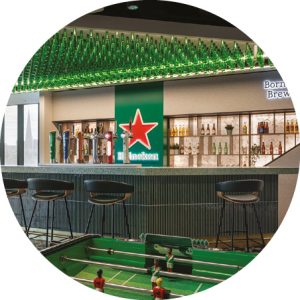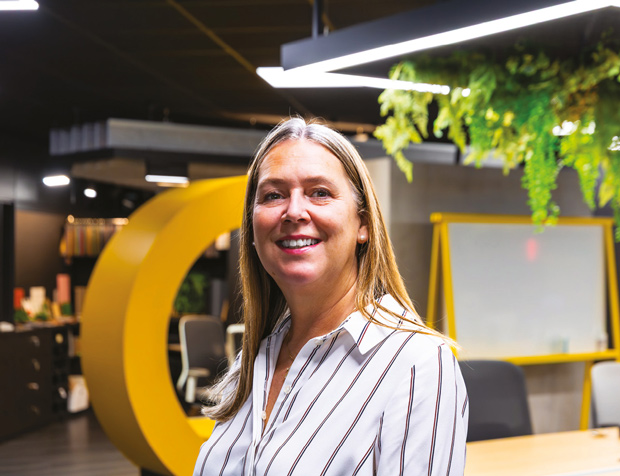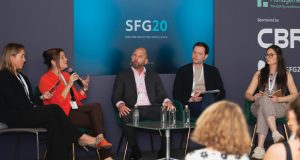Lisa Flannery, the new Managing Director at Workplace Consultancy, Design and Build company Claremont talks to Sara Bean about her plans for the future and the changes to workplace design she’s seen during her career
Workplace design and build company Claremont recently heralded a new chapter in its 48-year history with the announcement of a strategic leadership transition. Managing Director Tim Frankland is now an Executive Chairman, while previous Deputy MD Lisa Flannery has taken on the Managing Director role.
Flannery joined Claremont in 1989 and so brings 36 years of experience to the role. In answer to the question, ‘why stay in the same company for so long?’ she points out she’s performed a multitude of roles within a company that has gone through a series of changes over the past decades, including a management buyout in 1996 and becoming an employee-owned organisation in 2020.
Flannery started her career at Claremont in the finance department, moving into customer services / project management roles which she believes gave her a deep understanding of the needs of clients and a thorough grounding on how ideas are turned into workplace solutions. She later moved into the furniture division of Claremont, as the company, historically, was “more heavily focused in furniture than it was in fit out”. More recently, she was responsible for the commercial, design and furniture teams, becoming Deputy MD in 2022.
She explains: “I’m not a designer, but I think working in a creative industry, you get to understand the principles of design and I still work on a lot of projects with clients. As my background is operational, process and client focused, rather than in commercial sales, I want to concentrate on process, because while we’ve got loads of fantastic commercial people, we need to look at what we are offering our clients and ask, ‘are we doing what we say we were going to do?’”
WORKPLACE EVOLUTION
One of Flannery’s strengths is in recognising the forces behind the changes to the workplace. She notes that when she first joined the company, IT was just being integrated into the workplace and staff occupied core desks with pedestals which cost up to £4,000 per head. Thirty years down the line, the price of a workstation is probably £150 to £300, often as a shared or flexible space. Many of these changes were driven by technology.
Explains Flannery: “As technology became faster, better, smarter and smaller, the nature of the workplace has changed. In the traditional office the workspace was seen as a status symbol. Moving away from cellular spaces has been a massive challenge within the workforce, because in some sectors like law, it was very much seen a symbol of moving up the chain.
“While offices have gone from fixed desking – in some ways it’s gone full circle as a little bit of ‘cellularisation’ is being reintroduced, and while the number of desks is being reduced, they’re being replaced by individual pods.”
This brings us back to Flannery’s earlier point that it’s crucial to work with clients to understand what they’re looking to achieve. Rather than offering a product or a design solution, discover what they need that space to do, which is where a project team can help them determine what is needed to fill that space.
 Says Flannery: “That’s always been our approach, whereas maybe other organisations might want to sell certain solutions or certain products when we are talking with clients, we want to understand, ‘what is that going to do? What are you going to use that for?’”
Says Flannery: “That’s always been our approach, whereas maybe other organisations might want to sell certain solutions or certain products when we are talking with clients, we want to understand, ‘what is that going to do? What are you going to use that for?’”
She also reveals that with office sizes being reduced every bit of space must have a function and a form, without any ‘dead pockets’, so clients are keen to ensure that there’s a function for every area.
“Gone are the days where people will have a breakout area that doesn’t have three other functions, whether that be for town halls, one to ones, or recreational space for activities. It’s all about making the most of the space that they’ve got.”





